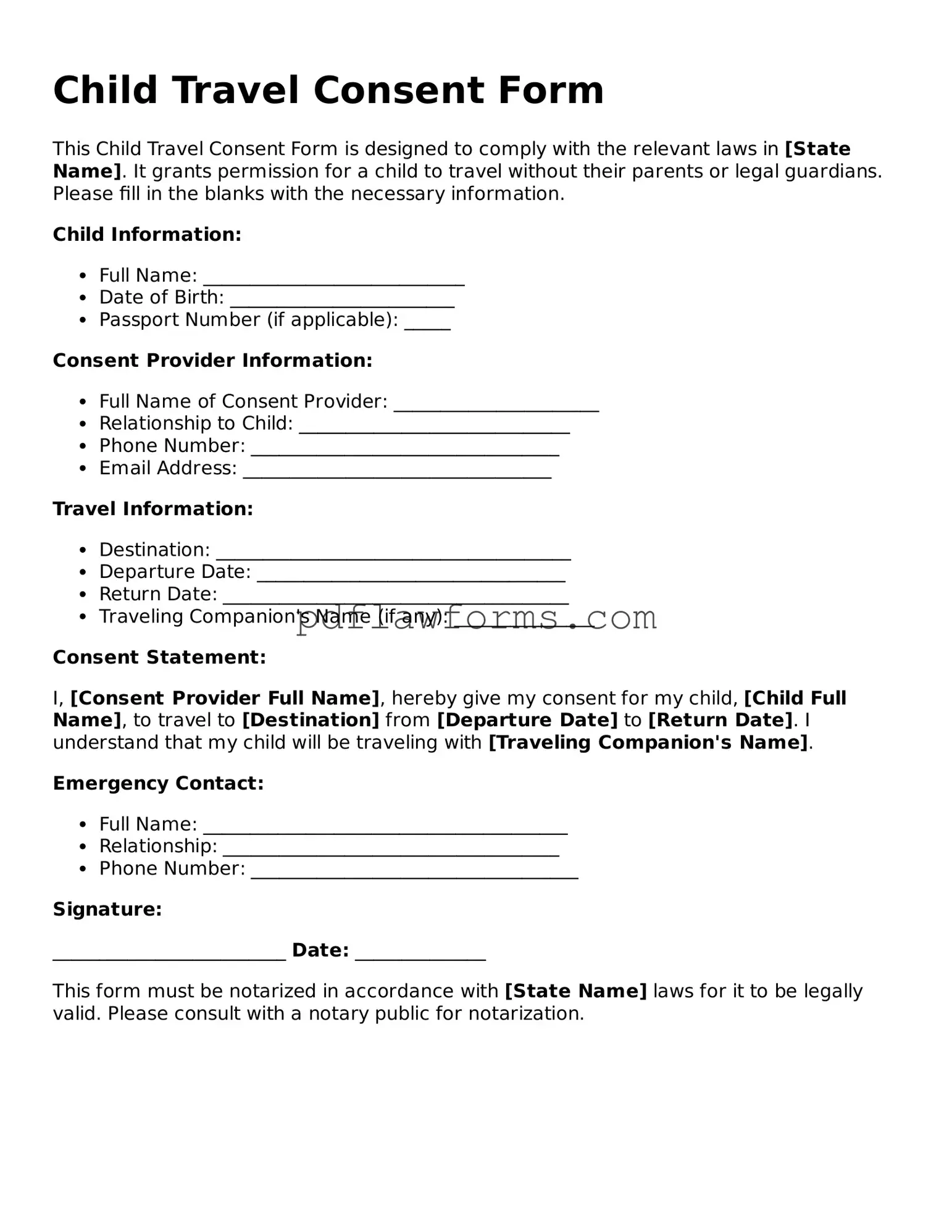Completing a Child Travel Consent Form is an important step for parents and guardians who wish to ensure that their children can travel safely and legally. However, several common mistakes can occur during this process, potentially leading to complications. Understanding these mistakes can help prevent issues.
One frequent error is failing to provide accurate information about the child. This includes the child's full name, date of birth, and any other identifying details. Inaccurate information can lead to delays at border crossings or even denial of entry into a country.
Another mistake is not including all necessary signatures. Both parents or guardians should ideally sign the form. If one parent is unavailable, a notarized letter from that parent may be required. Omitting signatures can render the form invalid.
People often overlook the importance of including travel details. The form should specify the destination, travel dates, and the names of any accompanying adults. Without this information, authorities may question the legitimacy of the travel plans.
In some cases, individuals forget to check the requirements of the destination country. Each country has its own regulations regarding child travel consent. Not being aware of these requirements can lead to unexpected issues at the border.
Another common oversight is neglecting to provide contact information. Including a phone number and address for the parents or guardians can facilitate communication if any issues arise during travel. This detail is often crucial for authorities.
Some individuals may also fail to have the form notarized when required. While some jurisdictions do not mandate notarization, many others do. Notarizing the form adds a layer of legitimacy that can be beneficial during travel.
People sometimes forget to update the form if there are changes in circumstances. If a child’s travel plans change, or if there are new guardians involved, it is essential to revise the consent form accordingly to reflect the current situation.
Additionally, individuals may neglect to keep copies of the completed form. Having copies on hand can be helpful if the original is lost or if authorities request verification of consent during travel.
Lastly, individuals often do not seek legal advice when uncertain about the process. Consulting with a legal professional can provide clarity and ensure that all necessary steps are taken to protect the child’s interests during travel.
